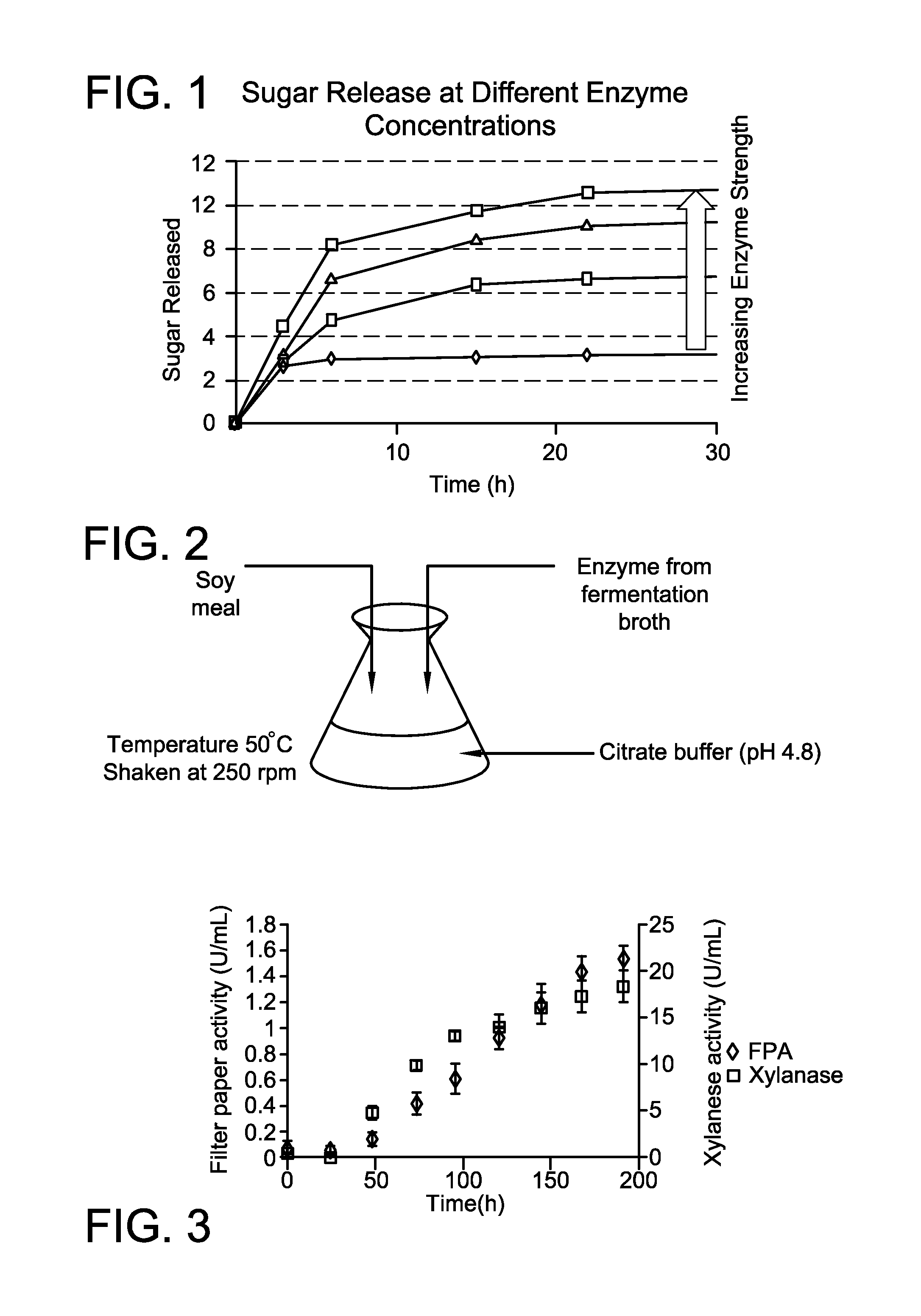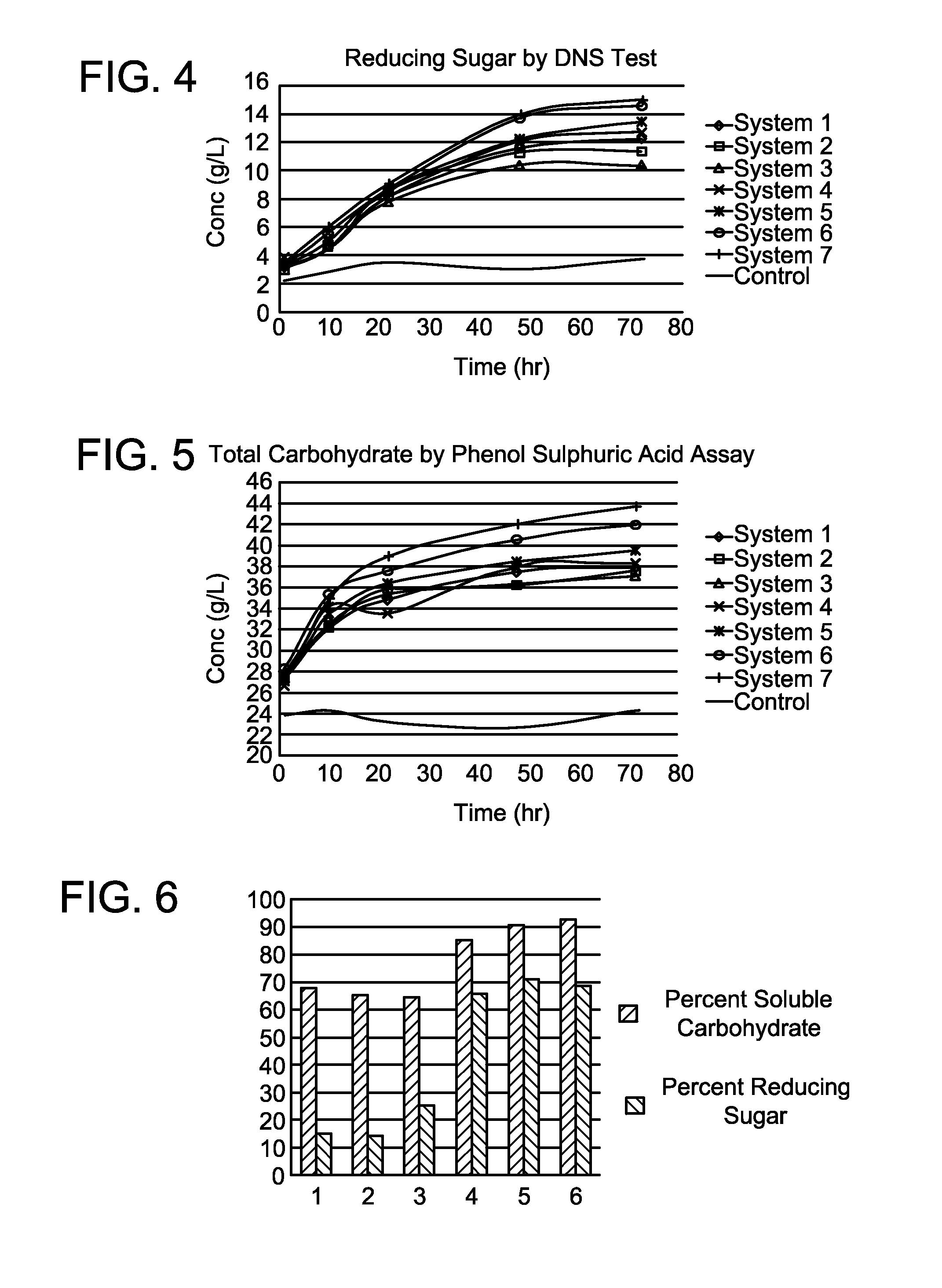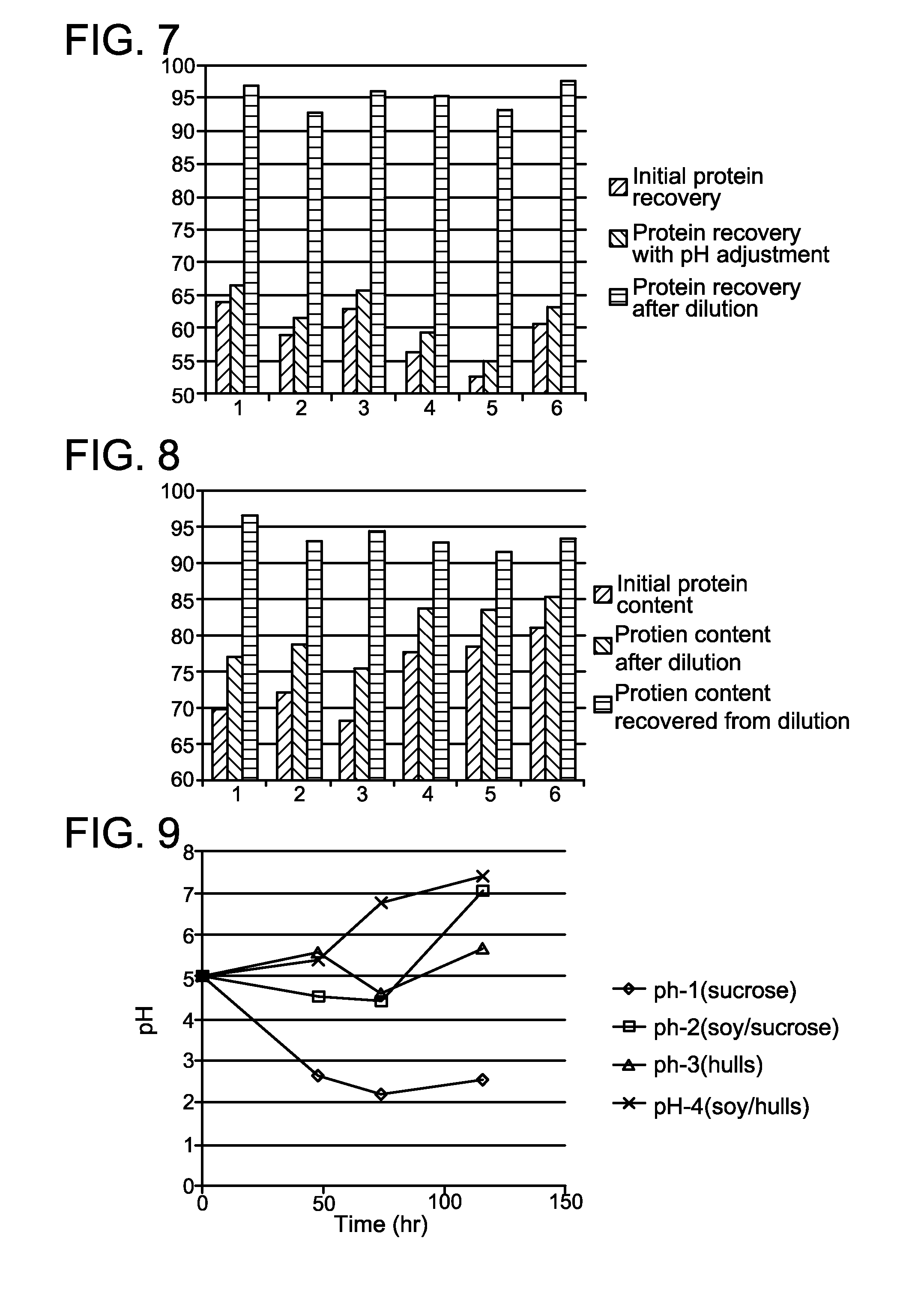Enzyme-based protein separation and enrichment from soy meal, wheat meal, and other protein-rich materials derived from plant seeds, fruits and other biomass
a technology of soy meal and wheat meal, which is applied in the direction of enzyme stabilisation, peptides, peptide sources, etc., can solve the problems of significant amount of soluble protein and other materials trapped in and around, and the enriched protein material does not have the significant quantity of undigestible oligosaccharides and polysaccharides, so as to improve the protein content of the resulting products
- Summary
- Abstract
- Description
- Claims
- Application Information
AI Technical Summary
Benefits of technology
Problems solved by technology
Method used
Image
Examples
example 1
[0154]For example, we produced the enzymes by submerged fermentation of T. reesei Rut-C30, a reported cellulase producer. A set of possible procedures are described in the following: A preculture was prepared in potato dextrose broth by inoculating loops of culture maintained on potato dextrose agar plates at 4° C. After 72 hours of incubation, the preculture was used to inoculate a submerged fermentation vessel. The cells were permitted to grow on defatted soy flour as the nitrogen source and lactose, soluble soy carbohydrates, or soybean hull as the carbon source.
[0155]The pH of seed culture broth is kept at a set range for good cell growth and enzyme production and the dissolved oxygen concentration in the broth is maintained above 20%. After growing the fungus for 6 days to 2 weeks, the cells were separated from the fermentation broth by filtration. The broth was found to contain cellulase, hemicellulase and pectinase (among others), which can then be added to soy meal for enric...
example 2
Enzyme Hydrolysis of Soybean Meal with Different Enzyme Activity Levels
[0156]Objective of this experiment was to evaluate the effect of different enzymes (cellulase, xylanase and pectinase) on the hydrolysis of the insoluble polysaccharides in soybean meal. Cellulase, xylanase and pectinase are the major enzymes that are most responsible for the hydrolysis of the carbohydrates. The effect of each enzyme was studied by varying the ratios of these enzymes in the enzyme mixture.
Design of the Experiment
[0157]It has been found that different fermentation batches of enzyme broth will have different levels of cellulase, xylanase and pectinase activity. So, three different enzyme broths prepared from three different fermentation runs using Trichoderma reesei were prepared. These batches had the following enzyme levels—Batch 1: cellulase 2.66 FPU / ml, xylanase 205.9 U / ml, pectinase 8.3 U / ml, Batch 2: cellulase 2.06 FPU / ml, xylanase 66.7 U / ml, pectinase 17.2 U / ml, and Batch 3: cellulase 2.7 FP...
example 3
Evaluation of the Effect of Pectinase on the Degree of Hydrolysis
Experimental Design
[0161]Totally, six systems were used in this study (see Table 2). All the systems except System 1 had similar total enzyme activity per gram of soybean meal. Enzymes in three of the systems came from three T. reesei fermentation broths, each being produced using one type of enzyme-inducing substrate, i.e., soy hull (System 1), a mixture of soy hull and soy flour (System 2), and soy flour (System 3). Commercial pectinase from Sigma Aldrich was used in Systems 4 and 5, as duplicates, to see the effect of high pectinase activity (alone) on the hydrolysis. System 6 had enzymes from a mixture of commercial pectinase and the soy hull-induced fermentation broth. Upon completion of hydrolysis, the solid protein matter was separated and collected from the liquid material by centrifugation. The liquid hydrolysate was diluted with water of 10-fold volume or was adjusted for pH (in the range of about 4.5 to abou...
PUM
| Property | Measurement | Unit |
|---|---|---|
| Temperature | aaaaa | aaaaa |
| Temperature | aaaaa | aaaaa |
| Temperature | aaaaa | aaaaa |
Abstract
Description
Claims
Application Information
 Login to View More
Login to View More - R&D
- Intellectual Property
- Life Sciences
- Materials
- Tech Scout
- Unparalleled Data Quality
- Higher Quality Content
- 60% Fewer Hallucinations
Browse by: Latest US Patents, China's latest patents, Technical Efficacy Thesaurus, Application Domain, Technology Topic, Popular Technical Reports.
© 2025 PatSnap. All rights reserved.Legal|Privacy policy|Modern Slavery Act Transparency Statement|Sitemap|About US| Contact US: help@patsnap.com



